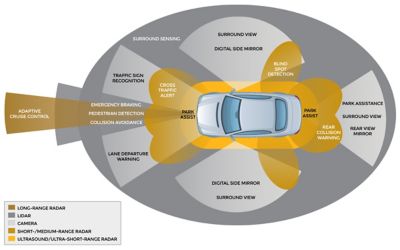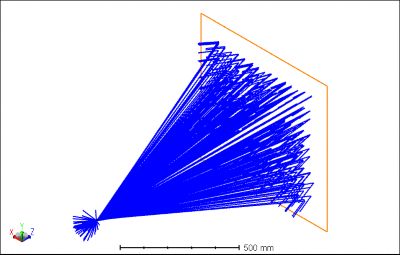-
-
Access Free Student Software
Ansys empowers the next generation of engineers
Students get free access to world-class simulation software.
-
Connect with Ansys Now!
Design your future
Connect with Ansys to explore how simulation can power your next breakthrough.
Countries & Regions
Free Trials
Products & Services
Learn
About
Back
Products & Services
Back
Learn
Ansys empowers the next generation of engineers
Students get free access to world-class simulation software.
Back
About
Design your future
Connect with Ansys to explore how simulation can power your next breakthrough.
Free Trials
ANSYS BLOG
March 29, 2023
The Implications of Flash Lidar for the Consumer Electronics Market
Previous blogs in this series have focused on diffractive optics as a method of meeting miniaturization requirements for modern optical system applications. Today, let's take a look at flash lidar, a subset of lidar technology that's gaining popularity for its unique capabilities — particularly in consumer electronics.
What is Lidar?
Light detection and ranging technology, or lidar, is a remote sensing method that uses light or laser pulses to target objects and surfaces and measures the time that the beam takes to return. By sending steady pulses and comparing the time measurements from each to the next, the system can tell a story about something that's changing, such as the expressions on a person's face or the activity surrounding a moving car. Lidar is used for everything from enhancing car navigation systems and making better cell phone cameras to creating depth maps for augmented reality (AR) and examining Earth's surface from airborne positions.
Lidar systems comprise three primary components: a source of illumination, a system that directs the light, and a receiver (or "observer") such as a camera, which the beam hits when it returns. These components work together to generate data that enables virtual human perception of an ever-changing physical environment. Lidar supports the complexity of capturing physical movement across multiple vectors — such as, in the case of automotive lidar, the rotation of the lidar device to scan in multiple directions at once; the movement of the car it's attached to; and the movement of objects around the car, such as a pedestrian stepping in the direction of the car's current path.

Figure 1. Diagram of lidar-enabled automotive features.
Ansys Optics products, together with other Ansys offerings such as Ansys Mechanical, provide an orchestrated ability to design complex lidar systems end to end, with data sharing, ray tracing, system modeling, and predictive simulations from the nano to macro scale. In some applications, it's necessary to consider alternatives within the larger umbrella of lidar technology that allow for miniaturization. That's where flash lidar comes in.
Flash Lidar: Fitting Lidar Into Tiny Spaces
Flash lidar is a type of lidar that uses a single beam, rather than multiple beams, to detect movement. To build on our discussion in the previous blog, flash lidar includes a two-dimensional grating in a system that splits the light coming from the source and translates it into a data matrix, enabling the optical system to detect the flow of movement in the objects around it.
In cases where movement tracking is needed within a tiny physical housing, flash lidar can be a beneficial option over traditional lidar. It's more compact because it removes the need for multiple beam projections. To make up for the limitation of not using multiple beams to generate a complete picture, you can design a flash lidar system to spread its beam in a very specific pattern. You can also incorporate multiple light sources from a wider area so that the beam reports more descriptive data, all without needing to expand the miniaturized size of the system.

Figure 2. Zoomed-out view of a 2D point array as applied in flash lidar.
This expansion of lidar into miniaturized technology opens up new possibilities in consumer electronics for users and developers alike. Examples of using flash lidar in everyday applications include:
- Facial recognition capabilities in tablets and phones.
- Headset-based player movement detection in online games.
- Mixed-reality headset user interfaces based on physical gestures.
As with traditional lidar, Ansys products support comprehensive design and development of flash lidar systems for the consumer electronics market, as well as other industries. To learn more, check out our knowledgebase article series on modeling a flash lidar system in Ansys Zemax OpticStudio, or watch our two-part flash lidar webinar.